Slavs and the First Bulgarian Kingdom in the VII-VIII centuries
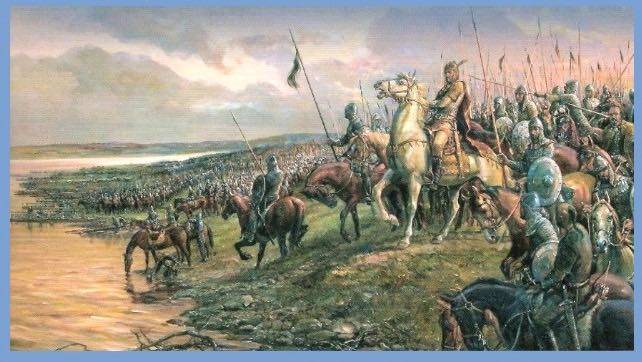
Slavs in the Subunavia and the Balkans from the middle of the VII century
By the middle of the VII century. Slavicization of the Balkans was over.
The Slavs were actively involved in the economic development of the occupied districts, for example, a tribe of Veleghizites from the Thebes and Dimitriads region sold the besieged Thessaloniki already in the 70 of the 7th century. corn.
We see the following Slavic tribal unions in the eastern part of the Balkans: in the Byzantine province of Scythia - the union of the northerners, in Lower Moesia and partially Thrace the union of the "seven tribes", as well as in Moesia - the Timochan and Moravian, where the encouraged or predecessors lived were not known. To the south, in Macedonia, the following clavlinia: Draguvites (Dragovites) or other Uvitans, Sagudates, Strumeans (Stremeni), Runchins (Richnids), Smolensk. In Dardania and Greece, there is a union of four tribes: Vayunites, Velegesites, Milenians (Milinians) and Yezerets (Jesherites), in the Peloponnese - Milings and Eserites.
After the fall of the power of the “nomadic empire”, the Avar over the Slavs and after their migration and the Ants to the territory of Byzantium beyond the Danube, the “democratic” tribal system was fully preserved - “everyone lived his own way”. Moreover, there is friction between the tribes and a complete lack of desire for unity.
Despite the fact that in the 70 years of the VII century. the Accident intensified again, and even part of the Croats and Serbs, as well as the Slavs who settled in Macedonia, fell under its rule, the Haganate no longer had the strength to make long campaigns towards Constantinople, but only to conduct border wars. The Avar forces were undermined by the Slavs, the Samo state, and the uprisings of the Bulgars (Bulgarians) who lived in Pannonia in the 30 of the 7th century: some of them migrated to related tribes in the steppes of Eastern Europe, and a small part, some, to Italy, others, under the leadership of a certain khan of Kuvrat, the nephew of Organa, to the north of Macedonia, although archaeologically there are no traces of Turkic-Bulgarians here (V. Sedov).
In such conditions, among the Slavic tribes, for whom, after resettlement, more favorable living and economic conditions developed, the process of forming an early state or tribal power structure stopped.
Proto-Bulgarians at the beginning of the 7th century
By the time of the creation of the first Bulgarian kingdom, the Bulgarian tribes proper wandered or lived on a vast territory from the Caspian to Italy.
In the framework of the established tradition, we will call that part of them that came to the lower Danube, the Proto-Bulgarians.
These tribes, the heirs of the Huns, were subordinate to the Tyur Haganate. And if in Italy or Pannonia there were only small groups of them, then they steadily populated the steppes of the Sea of Azov and the Black Sea.
At the same time, when the Bulgars or Bulgarians are fighting the Avars, in 634, after the liberation from the rule of the Turkic Khaganate, Khan Kubrat or Kotrag from the Dulo (Dulu) dynasty founded Great Bulgaria. The unification of the Black Sea hordes occurred during the civil war in the Western Turkic Khaganate (634 - 657 gg.), Which could not react to these events (Klyashtorny MG). These nomadic tribes lived a tribal life and were at the first, “tabor” stage of nomadism. Although they had a "capital" aul - on the site of Fanagoria on the Taman Peninsula.
Note that historians continue the debate about whether one person is Kubrat (or Kuvrat) and a certain Krovat, a nephew of Organa who fought with the Avar Kaganate, or different, but these historical personalities, firstly, are separated in time, and secondly, in space, the power of the Avars could not extend in any way to the lands of the Sea of Azov and the Black Sea and was limited to Pannonia and the surrounding lands.
Therefore, we can say that these leaders have only similar names.
After the death of Kubrat in the 40 years, who lived in the Sea of Azov, the Bulgarians, separated, according to legend, between his five sons, could not provide adequate resistance to their khazars, headed by the Turkic clan of Hagans - Ashinov.
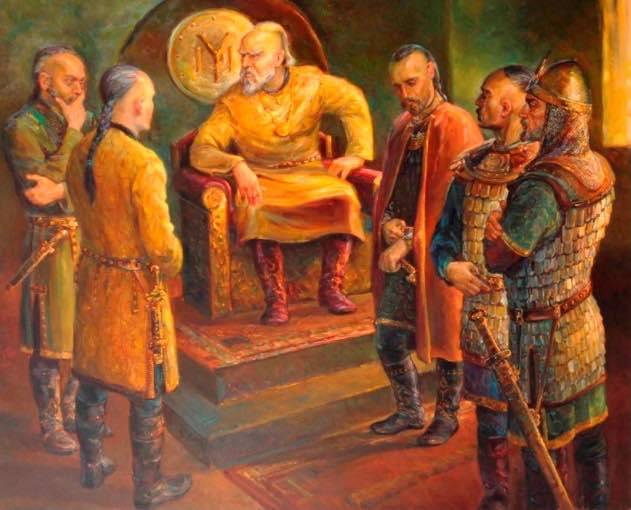
Clashes between the hordes occurred in the North Caucasus, and the victory was on the side of the Khazars. The fate of the Bulgarian tribes was different: some of the Bulgarians went north and created the state of the Volga Bulgars, some remained under the Khazars, called "Black Bulgarians", these are the ancestors of modern Balkars. Khan Asparuh, the third son of Kubrat, took his horde to the Danube and strengthened in the Danube Delta (Artamonov M.I., Pletneva S.A.). Patriarch Nicephorus wrote:
The third son, Asparuh, settled, according to several translators, between a certain river Ogla (Olga?) And the Danube, on the left side of the Danube, this marshy place represented "great security from enemies." Other researchers believe that this is not about the Ogle River, which is not possible to identify, but about the territory:
This is the territory of the lower reaches of Seret and the Prut, and this happened in the 70 of the 7th century.
Once there, the Asparuh horde immediately after respite began to raid across the Danube, onto lands that, despite all the vicissitudes, remained under the control of the Byzantine Empire.
In 679, the Bulgarians crossed the Danube and robbed Thrace, in response to them, Constantine IV himself (652 — 685 gg.) The empire had been waging war by this time for almost seventy-five years, at first with Sassanid Iran and then with the Caliphate, two years before that had signed the world for thirty years with the Arabs, this had enabled the Vasileus to pay attention to other problematic border territories. Konstantin “ordered all the fems to be transported to Thrace”, the question remains what was meant by the term “fema” in this particular case: a fema as a military district or a fema is a combined detachment of the district, and the second question is whether these military units were only from Thrace or is it there were really all “themes”, that is, also from Asia.
The Danube includes an empire fleet. The army crossed the Danube, presumably in the area of modern Galati (Romania). The Bulgarians, as once the Slavs, frightened by the forces of the empire, took refuge in swamps and some fortifications. The Romans spent four days in idleness, not storming the enemy, which immediately gave courage to the nomads. Because of the aggravated gout, Vasilevs leaves for the waters in the city of Mesemvria (modern Nessebar, Bulgaria).
But military happiness is changeable, and chance often frustrates brilliant plans and undertakings. Overwhelmed by inexplicable fear, the cavalry spread the rumor that the Vasileus had fled. And the general flight begins, upon seeing this, the Bulgarian riders found themselves in their element: they pursue and destroy the fleeing enemy. In this massacre all the units of Thrace fell, and now the path through the Danube was clear. They cross the Danube, reach Varna and discover beautiful lands here.
It should be noted that Slavic clavinia have already settled in these places. Most likely, after the clashes with the Avars in 602, the Antian tribes, from which we heard information about the union of the "Seven Tribes" (seven tribes) and northerners, settled here. Most likely, there were other tribes whose names were not reflected in the sources.
Archaeologists show that the settlement of the Black Sea coast of Bulgaria by the Slavs took place in the 20 of the VII century. As was usual for the Byzantine Empire, it tried to streamline relations with new migrants and perhaps they were or became “federates” of the empire, i.e. allied tribes.
This was extremely important for Byzantium, since in the conditions of ongoing wars from the middle of the VI century. the line between the catalog stratiots and other categories (for example, the federals) is erased and recruitment for war takes place for hire from any categories of persons liable for military service.
So, the Proto-Bulgarians or Bulgars found themselves on new lands. There are different versions of how the seizure of lands inhabited by Slavic tribes took place: peacefully or by agreement (Zlatarsky V., Tsankova-Petkova G.), without military action (Niederle L., Janitor F.). Researchers note different statuses that fell under the power of the Bulgarian clavinians: it is believed that the northerners interacted with them on a contractual basis, had their own leaders, their archon Slavun (764 / 765 g.) Is known, although they were moved to new habitats, in while the Slavs from the "Seven Tribes" were subjects or having a "pact" with the pro-Bulgarians, again, the interaction within the term "pact" has different meanings. According to another assumption, the northerners were one of the tribes of the “Seven Tribes” alliance, whose name was preserved, and this tribe was resettled from other allied tribes in order to weaken their alliance (Litavrin G.G.).
But if Theophanes the Preacher uses the term “conquering” in relation to the Slavs, then Patriarch Nikifor “subjugated the Slavic tribes living in the vicinity”: these sources leave no doubt that we are, of course, talking about hostilities. Fighting here, the Bulgarians conquer the Slavs: the union of seven tribes and northerners, then they seize the territory from the Black Sea to the Accident, along the Danube. Litavrin G.G., despite the fact that he considered the power of the Proto-Bulgarians to be soft, notes:
If earlier nomads attacked the territory of settled peoples and left in the steppe, this time they are resettled by all the people on the territory of settled peoples.
The Asparuh horde was at the first, “tabor” stage of nomadism. It was extremely difficult, and most likely, almost impossible to do in the area of the Danube estuary, where they were located in the 70's. VII century, but it was also impossible to roam freely in the captured provinces of Moesia, archaeologists note the appearance of permanent camps and burial grounds, only at the end of the VII - beginning of the VIII century, "in particular, the Novi Pazar burial ground" (Pletneva S.A.).
Khan Asparuh, as Patriarch Nicephorus wrote, moves entire tribes of Slavs to the Avar and Byzantine borders. They retained a certain autonomy, since they were borderline (Litavrin G.G.).
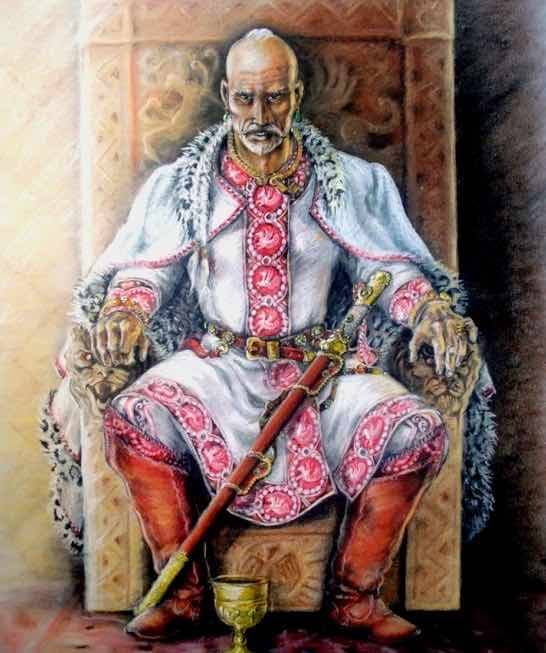
In August 681, Byzantium recognized the Bulgarian conquests in the provinces of Scythia and both Moesia, and begins to pay tribute to them. So the state was formed - the First Bulgarian Kingdom, which was established in the Balkans.
Nomadic "state" in the Balkans
What was this early political entity?
The Bulgarian or Proto-Bulgarian tribal union was essentially an army of one people or a people-army. The khan was not just a khan, but a "khan of the army."
The whole world was divided into "their state", in Turkic "el", and those who need to be destroyed or enslaved. Primitive military administrative activity was the basis of the Proto-Bulgar Turks. Note that the sklavinia did not have one. Such despotic governance was an important cementing factor of the new state, or, in the scientific language, of a costly pre-class association, which, having fallen into the sphere of interests of the Byzantine Empire, immediately began to undergo erosion. But at the initial stage, nomadism prevailed. Although in the first period of coexistence, the Bulgarian conquerors and the conquered Slavs lived and ruled from a single center, with the exception of some autonomous clavinias, cruel military discipline and organization changed the way of the Slavs.
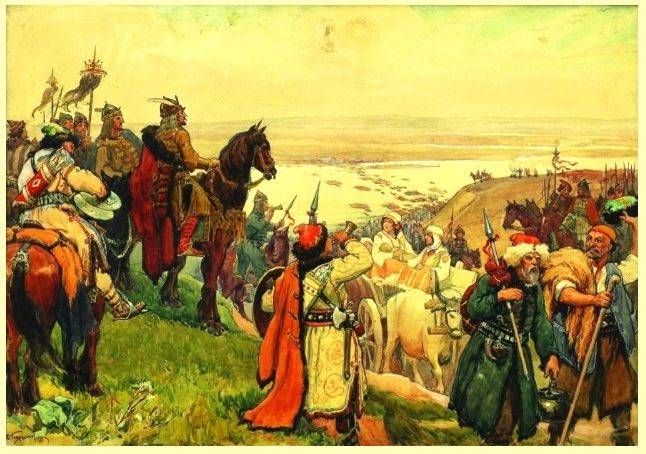
Based on his idea of a “state”, the khan built relations with subordinate peoples through their heads, who the Slavs were in the region, we do not know, therefore, it is not worthwhile to say that they were exclusively princes, “archons”. Given the level of development of Slavic society during this period, it could also be the head of the clan (elders, etc.). And it was precisely with the heads of the tribes that the khan communicated, that he treated them completely tyrannically, is beyond doubt, so even in 811, Krum Khan "forced the Slavs leaders to drink" from a bowl made from the head of Vasilyevs Nikifor I.
Note that despotism for this period is not an evaluation category, but the essence of management.
Political events in the Balkans in the 7th - early 9th centuries
In the Balkans, in the areas adjacent to Constantinople, both the Slavs subordinated to the Proto-Bulgarians and the free Slavonia of Macedonia and Greece become the key adversaries of the Romans.
Byzantium during the absence of the Arab threat constantly conducts military operations against them. But in the conditions when the state process slowed down among the Slavs, they could not render due resistance to the enemies.
In 689, Justinian II Rinotmet (Beznosy) (685 – 695 gg .; 705 – 711 gg.) Started the war against the Proto-Bulgarians and Slavs, apparently, the Slavonia were located very close to Constantinople, as he was forced to make his way to Thessallonics, on the way, casting aside the “great hordes of Slavs” and fighting the Bulgarians, he transferred part of the captured Slavs with their families to Opsiky, to Asia Minor, and he himself with difficulty broke through the ambushes of the Bulgarians.
But after losing power, he was forced to seek help from Tervel (701-721 gg.), The successor of Asparuh. Khan, to his advantage, helped Justinian II to regain his throne, for which he received the royal utensils and the title of "Caesar", the second after the emperor in the Byzantine hierarchy.
But Justinian II, due to his psychological characteristics, forgot about the help of the khan and opposed him on a campaign. With him was a fleet and a Thracian cavalry. The troops are located near the city of Ankhialo (Pomorie, Bulgaria). Proto-Bulgarians, experienced and attentive rider warriors, took advantage of the lack of clear command from the emperor, the carelessness of the Romans, “like animals ... suddenly attacked the Roman herd” and completely defeated the equestrian Byzantine army. Justinian shamefully fled from them on a ship to the capital.
After the death of Justinian II, the Arabs besieged in 717-718. Constantinople, while they landed on the European part of the territory. Success first fleet and the "secret" Greek fire, then frost, disease and the fortress of the walls of the city and the soldiers brought the enemy to defeat. Tervel, on the basis of a friendship treaty with the Roman Empire, assisted her capital during the Arab siege, destroying 22 Arabs, according to Theophanes the Byzantine. And in the same year, the Proto-Bulgarians and Slavs from Greece took part in the conspiracy of the former Emperor Anastasius II (713-715), who went on a campaign with Khan to Constantinople, but the Proto-Bulgarians betrayed him, having received significant gifts.
At the same time, the Bulgarians (and the Proto-Bulgarians and Slavs are now called by this name) participate in campaigns against Byzantium (the raid of 753). In the empire itself, there is a Slavicization of entire regions, which began during the period of domination of the Avar Haganate, so, after the plague of 746-747. The Peloponnese became completely Slavic, the Slavs appear among the highest officials of the empire, for example, the Patriarch of Constantinople · was a eunuch Nikita.
But at the same time, pressure begins on the Slavs who settled the borders of the empire, their relocation to other territories.
The iconoclast emperor Konstantin V (741-775 gg.), Taking advantage of a respite on the eastern front, immediately launched an offensive in Europe, conquering Slavonia in Macedonia and on the Greek border in 756. These were lands of the Dragovites or Druzhuvites and Sagudates.
In 760, he made a new campaign, or rather a raid on the Bulgarian borders, but in the Vyrbishsky mountain passage 28,7 km long, the Bulgarians ambushed him, most likely, her direct executors were Slavs experienced in this matter. The Byzantines were defeated, the stratigus of the theme of Frakisiev died, the Bulgarians got weaponand they begin retaliatory fighting. The pressure of Byzantium was probably associated with the strife that took place in Bulgaria. During it, intermediate success was on the side of one of the clans, whose representative, Taurus, became khan in 30 years. The Slavs, obviously his opponents, fled to the emperor. He, in turn, marched by sea and by land against the Proto-Bulgarians. Taurus drew thousands of allies to his side 20, most likely it was the Slavs who did not obey the Proto-Bulgarians, but were independent Slavs, and with these forces he started a battle that lasted all day, the victory was on the side of the Romans. The battle took place on 30 on June 763, the Vasileus triumphed, and the captive Proto-Bulgarians were executed.
The civil strife in Bulgaria continued, and Taurus and his superiors, who defeated but took the throne of Sabin (763 – 767 gg.), Who tried to conclude an agreement with the Romans, were accused of betrayal and fled to Vasileus, the Bulgarians elected a new khan - Pagan , during the visit of which the Byzantines secretly seized the leader of the northerners “Slavun, who did a lot of evil in Thrace” for peace talks in Constantinople. Together with him they seized the apostate and the leader of the robbers Christian, who was brutally executed. It was hard to say whether he was a Slav or not, yes, perhaps the person who had just adopted Christianity could hardly have been Greek, but Feofan the Byzantine is silent about his ethnicity. Bulgaria, as an ideologically weak association, gradually fell under the influence of the empire: probably there was a struggle of parties (clans), Byzantine supporters helped to capture its opponents, they helped bring the family and relatives of Sabin to the empire. The capture of the archon of the border Slavonia was probably due to the fact that he was not loyal to the khan and he looked at this incident through his fingers, the destruction of the strong and independent leader of the Slavic tribe was only in his hands.
Byzantium and Bulgaria are trying to capture the independent Slavonia of the eastern Balkans, this movement, as we saw above, began even under Justinian II.
In 772, the Romans, having gathered a huge army, opposed the 12 of thousands of Protobolar, who planned to conquer the Slavic tribes and resettle them in Bulgaria. With a sudden raid, the army of Constantine V defeated the army of Bulgarian boiles and captured them, making a triumph.
In 783, the logofet Stavraki, by order of Vasilisa Iryna, made a campaign against the Slavins. The troops were sent against the Slavs of Greece and Macedonia, to conquer the Smolensk, Strimonians and Rhinkhins of southern Macedonia and the Sagudates, Vayunites and Velezites in Greece and the Peloponnese. “Passing to Thessalonica and Hellas,” wrote Theophanes the Confessor, “he subjugated everyone and made tributaries of the kingdom. He also entered the Peloponnese and delivered to the kingdom of the Romans many captives and prey. ”
Some Slavs, for example, in the Peloponnese, were subordinated only in the tenth century, these are tribes of the Milings and the Ezerites. The Slavic tribes, who were previously free and levied tribute to the Greeks, were given a tribute - “pact” in the amount of 540 nomism for milings, 300 nomism for esterites.
But the conquest of other tribes could be in the form of a "pact", perhaps only on the condition of paying tribute and, most likely, participating in hostilities while maintaining autonomy. The empire was in dire need of combat reserves. So, in 799, a certain “archon”, the head of the border unit and the leader of the Slavs of Velzitia or Velegesitia — the Velegesites (the region of Thessaly and the city of Larisa), Akamir, participated in a conspiracy to overthrow Irina, therefore, he was quite tightly integrated into the higher echelons authorities, if he could act in such an important matter.
But the Slavs, who settled in the Peloponnese near the city of Patras, began to pay tribute to the metropolitan of the city, “deliver these supplies in accordance,” wrote Konstantin Bagryanorodny, “to the distribution and complicity of their community,” on autonomy.
The new emperor, who seized the throne by force, Nikifor I Genik (802 - 811), acting on the principle of "divide and conquer", carried out the resettlement of part of the feminine troops from the East to the border territories of the Slavs, which caused the movement among the Slavic tribes, which before This was paid tribute from the surrounding city and the indigenous inhabitants, the Greeks. In 805, the Slavs of the Peloponnese revolted.
Obviously, such a policy did not delight the Bulgarian kingdom, in 792 the Bulgarians defeated the young emperor Constantine VI, son of Irina, capturing the entire royal convoy, and the new Khan Krum (802 - 814 gg.), After the reforms, significantly strengthened his strength . In 806 g. Vasilevs made an unsuccessful campaign in Bulgaria, in 811 g. He repeated it. Vasilevs plundered the capital Pliska, everything that he could not carry away he destroyed: he killed both children and cattle. To the offers of Krum Komsomol, he refused. Then the warriors of Krum, most likely Slavs, erected wooden fortifications on the way of the Romans, all in the same Vyrbishsky passage. The huge army was ambushed and defeated, the emperor was beheaded:
Genesis of the Slavic state
The synthesis and mutual cultural exchange between the conquerors and the conquered can be observed in all periods of history, but the key factor of this period was violence and the principle of “grief for the vanquished” was fully implemented.
The victory of the Proto-Bulgarians provided them with an unconditional right to control the life and death of the conquered Slavic tribes, and the fact that the Slavs prevailed numerically did not matter. Otherwise, based on “symbiosis” and “coexistence,” it is difficult to explain the flight of Slavic tribes in Byzantium from the Proto-Bulgarians: “in 761-763. from Bulgaria left to 208 thousand Slavs. "
The warrior people in the person of the khan collected tributes, moved Slavic tribes to the borders of their possessions, used the conquered as a labor force to build fortifications, in particular, during the construction of the grandiose first capital of nomads. So, at the site of the settlement of Pliska, a huge winter village was created with a total area of 23 sq. km, the length of the shaft was 21 km, smaller winter roads were located nearby, several other winter roads were in the territory of Malaya Scythia.
An important task, especially of nomadic rulers, was to "increase the number of their subjects." “Since the formation of the Bulgarian state,” G.G. Litavrin - centralized exploitation was undoubtedly the dominant form of seizing surplus product from free community members and citizens. ”
And given the fact that the main rural population consisted of Slavs, this happened through the collection of a “pact” tribute from them in favor of the conquering tribe (V. Beshevliev, I. Chichurov).
Of course, the Proto-Bulgarians cannot talk about any state from the point of view of the formation approach, especially about the early feudal state, they stood on the way to the state, at the stage of "military democracy", and nothing more. The advantage of the Proto-Bulgarians, like the Avars over the Slavs, was exclusively technological (military affairs). This was the prevalence of nomads over farmers at the same level of development, and with a concentration of forces such steppe tribal associations could even face off against sharply more developed peoples such as Byzantium.
As with most "nomadic states", an important factor in Bulgaria was the process of settling of horsemen-riders on the ground, in conditions when it was impossible to "camp" roaming. On the one hand, this factor strengthened the amorphous structure of the "nomadic empire," and on the other hand, it contributed to the disappearance of the "people's army" of horsemen, which was the key to the success of the nomadic "state." In the end, the khan was the khan of the army of the people. About one hundred to one hundred and fifty years, the dominance of the Turkish Turks or Protobolar was absolute. According to archaeological data, ethnic dualism is present until the beginning of the 9th century. (Sedov V.V.). Real symbiosis begins only from the moment when the assimilation of the already settled Proto-Bulgarians by the Slavs, who had an overwhelming numerical superiority, takes place. As we wrote above, the neighborhood of a powerful Byzantine civilization influenced the collapse of the Bulgarian, Turkic community, where the leaders of the proto-Bulgarian tribes began to acquire “their own interests”, contrary to the interests of the “warrior people”, during the “civil wars” (VIII century), as it seems , many representatives of the nobility died, the Slavic leaders began to claim their place. If in the accident the process of settling of the dominant nomadic people did not happen, then due to geographical features (small area for nomadism) and political, proximity to the capital of the world - Constantinople, this happened with the proto-Bulgarians. Thus, the transformation of the nomadic “state” into a Slavic state began through a serious time period, no less than 150 years after the start of living in one territory, where the key factor was the decrease in the military strength of the proto-Bulgarian ethnos and the overwhelming numerical superiority of the Slavic ethnos.
To be continued ...
Sources and literature:
Artamonov M.I. History of the Khazars. SPb. 2001.
Ivanova O.V. Litavrin G.G. Slavs and Byzantium // Early feudal states in the Balkans of the VI - XII centuries. M., 1985.
Klyashtorny S.G. First Turkic Kaganate // History of the East in six volumes. M., 2002.
Litavrin G.G. Bulgarian zone in the 7th-12th centuries // History of Europe. M., T.III. 1992.
Litavrin G.G. Slavs and proto-Bulgarians: from Khan Asparuh to Prince Boris-Mikhail // Slavs and their neighbors. Slavs and the nomadic world. 10 release. M .: Science, 2001.
Litavrin G.G. The formation and development of the Bulgarian early feudal state. (end of VII - beginning of XIvv.) // Early feudal states in the Balkans of VI - XII centuries. M., 1985.
Niederle L. Slavic Antiquities, M., 2013.
Pletneva S.A. Khazars. M., 1986.
Pletneva S.A. Nomads of the southern Russian steppes in the Middle Ages IV – XIII centuries. M., 1982.
Sedov V.V. Slavs. Old Russian nationality. M., 2005.
Konstantin Bagryanorodny. About managing an empire. Translation G.G. Timpani. Edited by G.G. Litavrina, A.P. Novoseltseva. M., 1991.
Patriarch Nicephorus "Breviary" // Codex of the oldest written news of the Slavs. T.II. M., 1995.
Patriarch Nicephorus "Breviary" // Chichurov I.S. Byzantine historical works: "Chronography" of Theophanes, "Breviary" of Nicephorus. Texts. Transfer. Comment. M., 1980.
Codex of ancient written news about the Slavs. T.II. M., 1995.
Theophanes "Chronography" // Chichurov I.S. Byzantine historical works: "Chronography" of Theophanes, "Breviary" of Nicephorus. Texts. Transfer. Comment. M., 1980.
Theophanes "Chronography" // Codex of the oldest written news about the Slavs. T.II. M., 1995.
Theophanes the Byzantine. Chronicle of the Byzantine Theophanes from Diocletian to the kings of Michael and his son Theophylact. Translation by V. I. Obolensky. Ryazan. 2005.
Chichurov I.S. Byzantine historical works: "Chronography" of Theophanes, "Breviary" of Nicephorus. Texts. Transfer. Comment. M., 1980. C.122.
Miracles of St. Demetrius of Solunsky. Translation by O. V. Ivanov // Codex of the oldest written news about the Slavs. T. I. M., 1994.
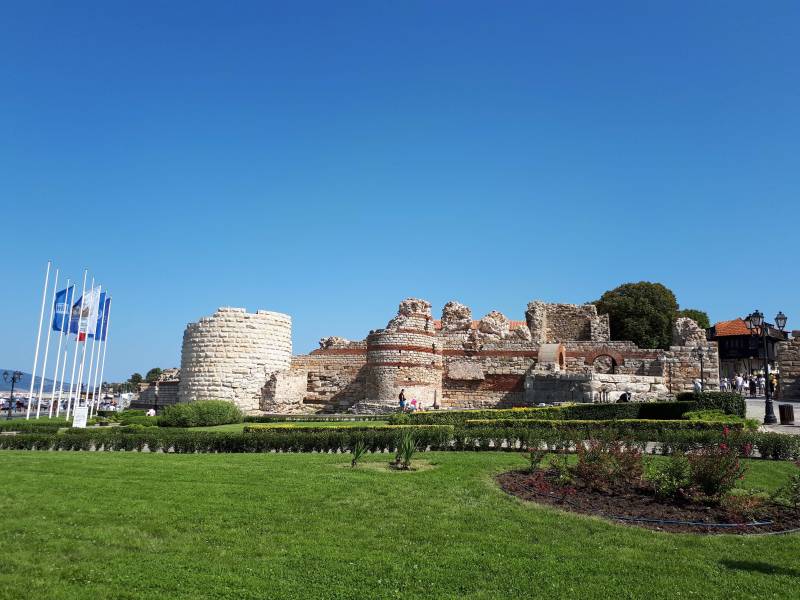
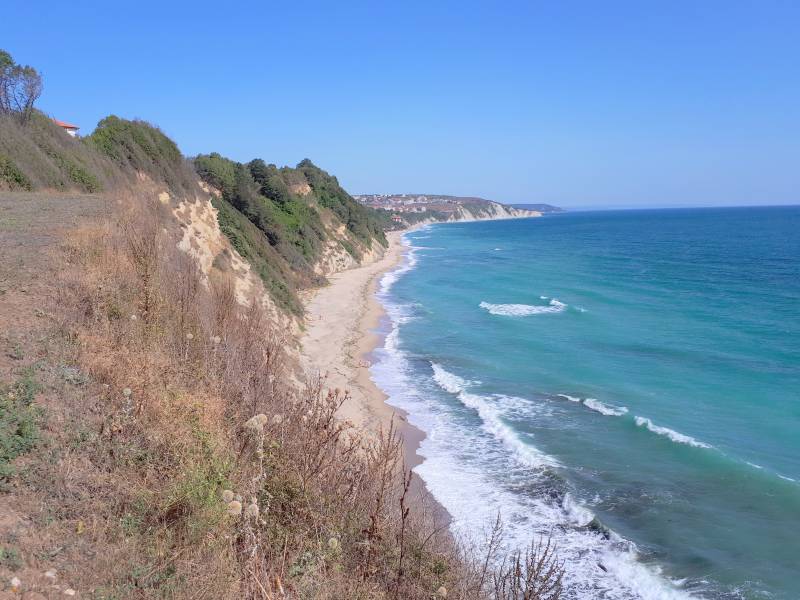
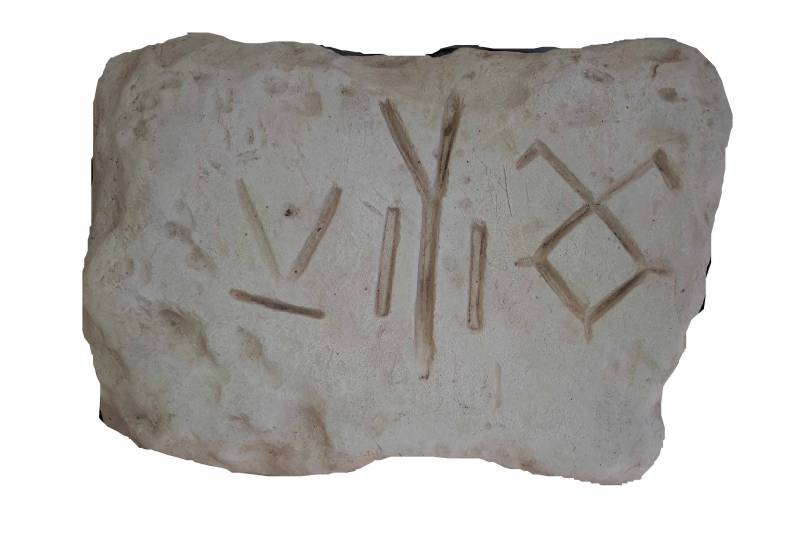
Information